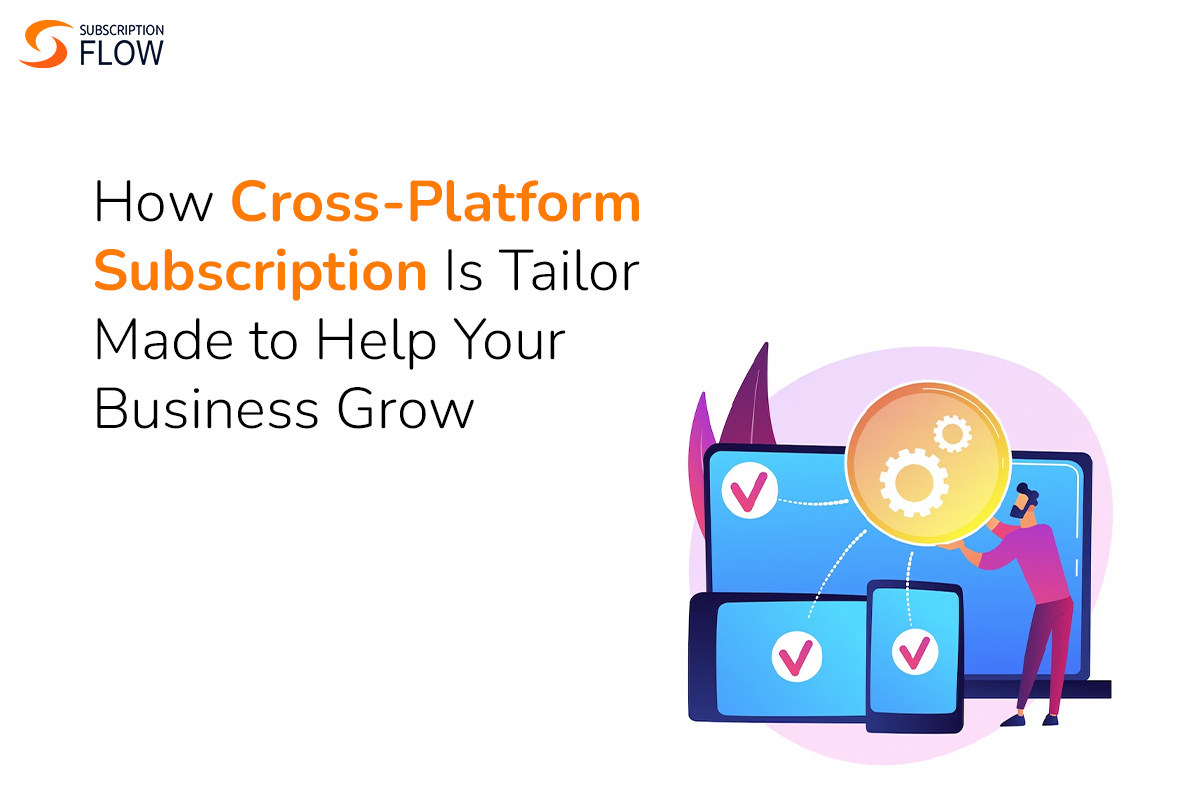
How Cross-Platform Subscription Is Tailor Made to Help Your Business Grow
It is a fact at this point that automated subscription management is significantly superior to its manual counterpart. But that discussion is now a thing of the past. The new bone of contention in the world of SaaS subscription management is about how to now further boost subscription management efficiency by way streamlining cross-platform subscription management. This is because owing to larger trends in the tech world – especially people becoming increasingly connected to one another through a multifold of devices like laptops and mobile phones – cross-platform subscription management has become the need of the hour.
A cross-platform subscription service refers to any service (such as an OTT streaming platform) that offers its subscribers access across multiple devices. In today’s age where people own multiple devices and access their apps and data across these devices via cloud-based services, businesses in industries like OTT streaming, e-Commerce and Digital Media must offer their subscribers access to their services across platforms. Consequently, subscription management software that businesses in these industries license to manage their software must also then adapt to this new reality and become efficient at managing subscriptions across devices.
In this blog post, after having outlined the importance of cross-platform subscriptions, we will go over the boons and challenges of this form of subscription management to argue that this new variation in subscription management is here to stay and businesses must adopt this model to not just survive but also thrive in their respective industries.
Read more: SubscriptionFlow Zinio Integration
How Cross-Platform Subscription Is Tailor-Made to Help Your Business Grow
Convenience and Flexibility
If your business belongs to the verticals of OTT streaming, e-Commerce and Digital Media, then the reason why it needs cross-platform subscriptions is that your customers are used to accessing your product on a host of different platforms that are seamlessly synchronized with one another. A person who watches half an episode of F.R.I.E.N.D.S on their laptop before going to the office should not have to remember either which episode they were watching or at what point did they stop watching it—it is the job of the OTT streaming sites like Netflix to automatically update the person’s Netflix app on their mobile phone for when they resume watching that same episode during their lunch break. In our modern-day entertainment landscape of endless options, any platform that fails to offer seamless cross-platform subscriptions risks losing its subscribers to competitors that manage to do it more effectively.
Reach and Accessibility
By having their product pre-configured to operate on a multiplicity of devices, businesses cater to a much larger audience. Businesses will benefit from even those subscribers who do not intend on using their product on all the available devices by at least offering them the option of using the product on whichever device they wish to use it from.
Increased Brand Loyalty
If customers are used to seeing the same platform on different devices that they use throughout the day, it will naturally result in increased brand loyalty in the customers since the brand would now have become a bigger part of their life. This can further result in the customers engaging with the brand in greater depth and thus being less likely to cancel their subscriptions in the future.
Monetization Opportunities
Another boon of cross-platform subscriptions is that despite offering most of its cross-platform integration free of cost, there are still ways in which businesses can monetize on this. Netflix is famous amongst its competitors for charging its subscribers a small extra fee on top of its basic subscription plan for the option of using Netflix on multiple devices. Variations in subscription plans such as these do not put too much pressure on the subscriber (to the point of dissuading them from continuing the subscription), yet still boost the business’ revenue.
Challenges to Providing Cross-Platform Subscription
There can, however, be a couple of challenges to providing cross-platform subscriptions which are as follows:
Higher Cost
In the beginning, especially, it can be a tremendous cost to set up and maintain the business’ product on multiple devices. And because initially businesses often struggle with generating enough revenue, it can prove to be a serious drain on their resources. An easy fix to that can be to gradually expand to multiple devices and use the revenue generated from success on one device onto developing the product on the other one.
Greater Dependency on Platform Providers
By spreading out the product on a list of different platforms, the business ends up having to accommodate all the technical requirements and specifications of these different platform providers. The popular streaming service, HBO Max, struggled a lot in its initial days owing to it not being able to agree to a revenue-sharing deal with Roku TV and, as a result, incurred losses due to the new subscribers that it was unable to attract.
Read more: Improve Customer Retention and Sales Revenue for Magazines Using Subscription Management Software
Cross-Platform Subscription in the Future
Yet the future, just like the present, is all about cross-platform subscriptions. Therefore, businesses need to find ways of smoothing out their logistical issues regarding the integration of their product onto different platforms because there is no going back from most subscribers now expecting products to work on nearly all devices.
Businesses also need to be cognizant of the fact that because cross-platform subscriptions are so dependent on platform providers and especially the technical architectures of the devices they make, they will therefore have no choice but to keep updating their product owing to these technical changes in the devices that their subscribers use.
In the future, if Apple decides to replace the speakers on the iPhone with surround-sound technology that comes in-built into futuristic iChips that users place inside their ears, then cross-platform subscription providers like Netflix will have to tweak the sound on the media on their app to cater to this new technological change. Not doing so will not only mean that the Netflix application will become less compatible with Apple devices, but Netflix subscribers too will start flocking to competitors that would have invested in tweaking their products to keep up with these changes in technology.










